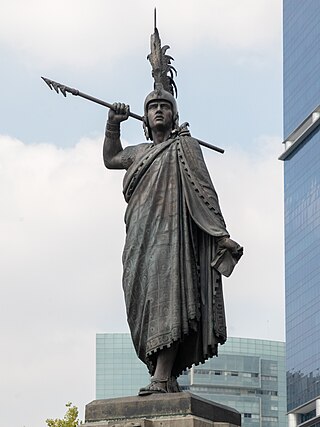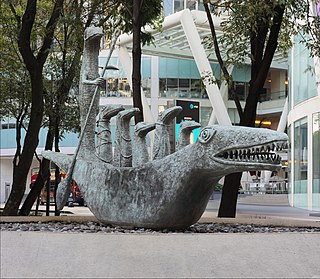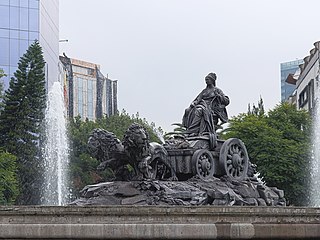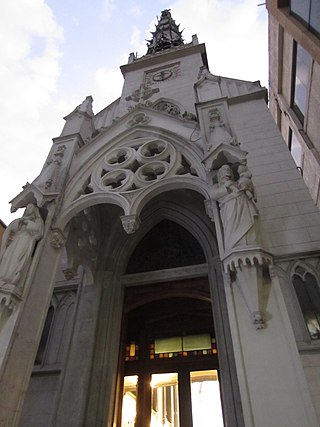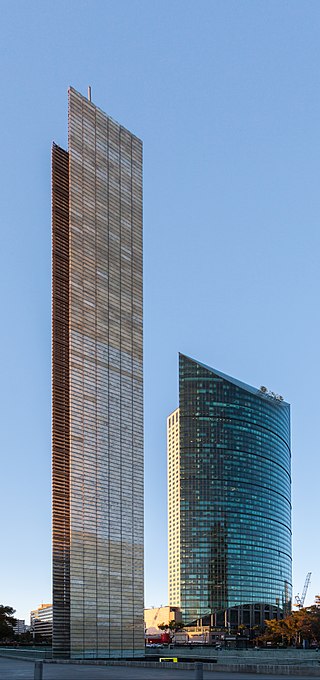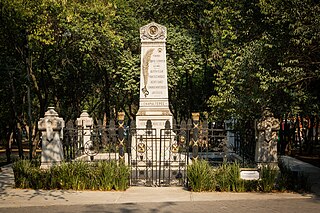Self-guided Sightseeing Tour #9 in Mexico City, Mexico
Legend
Guided Free Walking Tours
Book free guided walking tours in Mexico City.
Guided Sightseeing Tours
Book guided sightseeing tours and activities in Mexico City.
Tour Facts
5.2 km
122 m
Experience Mexico City in Mexico in a whole new way with our free self-guided sightseeing tour. This site not only offers you practical information and insider tips, but also a rich variety of activities and sights you shouldn't miss. Whether you love art and culture, want to explore historical sites or simply want to experience the vibrant atmosphere of a lively city - you'll find everything you need for your personal adventure here.
Activities in Mexico CityIndividual Sights in Mexico CitySight 1: Monumento a Cuauhtémoc
The Monument to Cuauhtémoc is an 1887 monument dedicated to the last Mexica ruler (tlatoani) of Tenochtitlan Cuauhtémoc, located at the intersection of Avenida de los Insurgentes and Paseo de la Reforma in Mexico City. It is the work of Francisco Jiménez and Miguel Noreña in the "neoindigenismo", and was proposed to promote the new government of Porfirio Díaz.
Sight 2: How Doth the Little Crocodile
How Doth the Little Crocodile is both a painting and an outdoor bronze sculpture by British-born Mexican surrealist artist Leonora Carrington.
Sight 3: El Sereno
El Sereno is a statue installed at Glorieta de los Insurgentes, a roundabout in Avenida de los Insurgentes, in Cuauhtémoc, Mexico City. The statue was designed by Víctor Manuel Villareal and was unveiled in 1992. It depicts a watchman, a position that once represented law enforcement. Originally, El Sereno included a lamp and a plaque, both of which have since been removed or stolen.
Sight 4: Glorieta de los Insurgentes
Glorieta de Insurgentes is a large roundabout in Mexico City formed at the intersection of Avenida Chapultepec and Avenida de los Insurgentes. Oaxaca Avenue connects to it heading southwest to Fuente de Cibeles. The smaller street Génova connects to Zona Rosa. Jalapa connects via one-way traffic from Colonia Roma.
Sight 5: Plaza Río de Janeiro
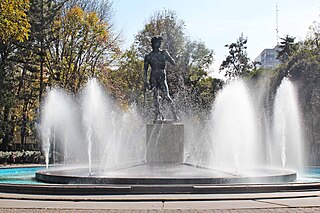
Plaza Río de Janeiro is a public park in Roma, Mexico City. It is east of Fuente de Cibeles and north of Plaza Luis Cabrera. The central feature of Plaza Río de Janeiro is a fountain with a replica of Michelangelo’s David.
Sight 6: Fuente de Cibeles
The Fountain of Cybele in Mexico City is a bronze statue installed in Colonia Roma in 1980, and refurbished in 2011. A symbol of brotherhood between the Spanish and Mexican communities, it is a replica of the fountain located in the Plaza de Cibeles in Madrid that was built by architect Ventura Rodríguez between 1777 and 1792. The Mexican version is located at a traffic circle in Plaza Villa de Madrid, where Oaxaca, Durango, Medellín and El Oro streets converge in Colonia Roma. The plaza and statue are considered emblematic sights of Mexico City.
Sight 7: Acueducto de Chapultepec
The Chapultepec aqueduct was built to provide potable water to Tenochtitlan, now known as Mexico City. Tenochtitlan was the capital of the Triple Aztec Alliance empire. This fresh water was transported from the Chapultepec springs. Two aqueducts following the same route from the springs were built by the Aztecs during the 15th century, the first destroyed by flooding and the second by the Spanish. After the Spanish conquest a colonial aqueduct was built, the ruins of which are located near Metro Sevilla.
Sight 8: Parish of the Holy Child of Peace
The Parish of the Holy Child of Peace is a historic church located near Paseo de la Reforma and Zona Rosa in Cuauhtémoc, Mexico City, Mexico. It is also known as Praga Parish because it is found on Praga 11 Street. The church is known for its German neogothic architecture and was recognized as a temple by the Secretariat of the Interior in 1931.
Sight 9: Fuente de la Diana Cazadora
The Huntress Diana Fountain stands as a monumental sculptural landmark situated within the roundabout at the intersection of Paseo de la Reforma and Río Misisipí and Sevilla streets. Positioned on the border of the Colonia Cuauhtémoc and Colonia Juárez neighborhoods in Mexico City, this fountain serves as a focal point within the urban fabric of the metropolis. Designed by the Italian architect and sculptor Enrique Alciati, the fountain was unveiled in 1942 and has since become an enduring symbol of Mexico City's cultural heritage and urban landscape. The centerpiece of the fountain is a striking bronze statue depicting Diana, the Roman goddess of the hunt, poised atop a stone pedestal adorned with decorative reliefs and motifs. Adjacent to the Huntress Diana Fountain, several landmarks bear homage to its iconic presence within Mexico City's urban landscape. Among these notable sites are the Cine Diana and two prominent skyscrapers: the Corporativo Reforma Diana and Torre Diana.
Sight 10: Estela de Luz
The Estela de Luz is a monument in Mexico City built in 2011 to commemorate the bicentenary of Mexico's independence from Spanish rule. Its design was the winning entry in an invited competition to seek the best combination of Mexico's past and future; the design uses quartz and electric lighting to achieve this effect. The Estela de Luz is mainly used for cultural events. Below it, the Centro de Cultura Digital cultural complex was built.
Sight 11: Obelisco a los Niños Héroes
The Obelisco a los Niños Héroes is a monument installed in Chapultepec, Mexico City. The cenotaph was created in 1881 by architect Ramón Rodríguez Arangoity, one of the cadets captured in the Battle of Chapultepec. The marble cenotaph was a typical nineteenth-century monument. This one lists the names of the six cadets, the Niños Héroes, killed in the fierce fighting in the Mexican–American War as military cadets defended as well as the 40 who survived the attack. For his own political purposes, General Porfirio Díaz inaugurated the monument with a military and civilian audience of dignitaries. Subsequently, the obelisk became an annual site of remembrance for the Association of the Military College, a group of veterans who had been cadets. This modest-sized monument was superseded in 1952 by the massive Monumento a los Niños Héroes.
Share
How likely are you to recommend us?
Disclaimer Please be aware of your surroundings and do not enter private property. We are not liable for any damages that occur during the tours.
GPX-Download For navigation apps and GPS devices you can download the tour as a GPX file.
